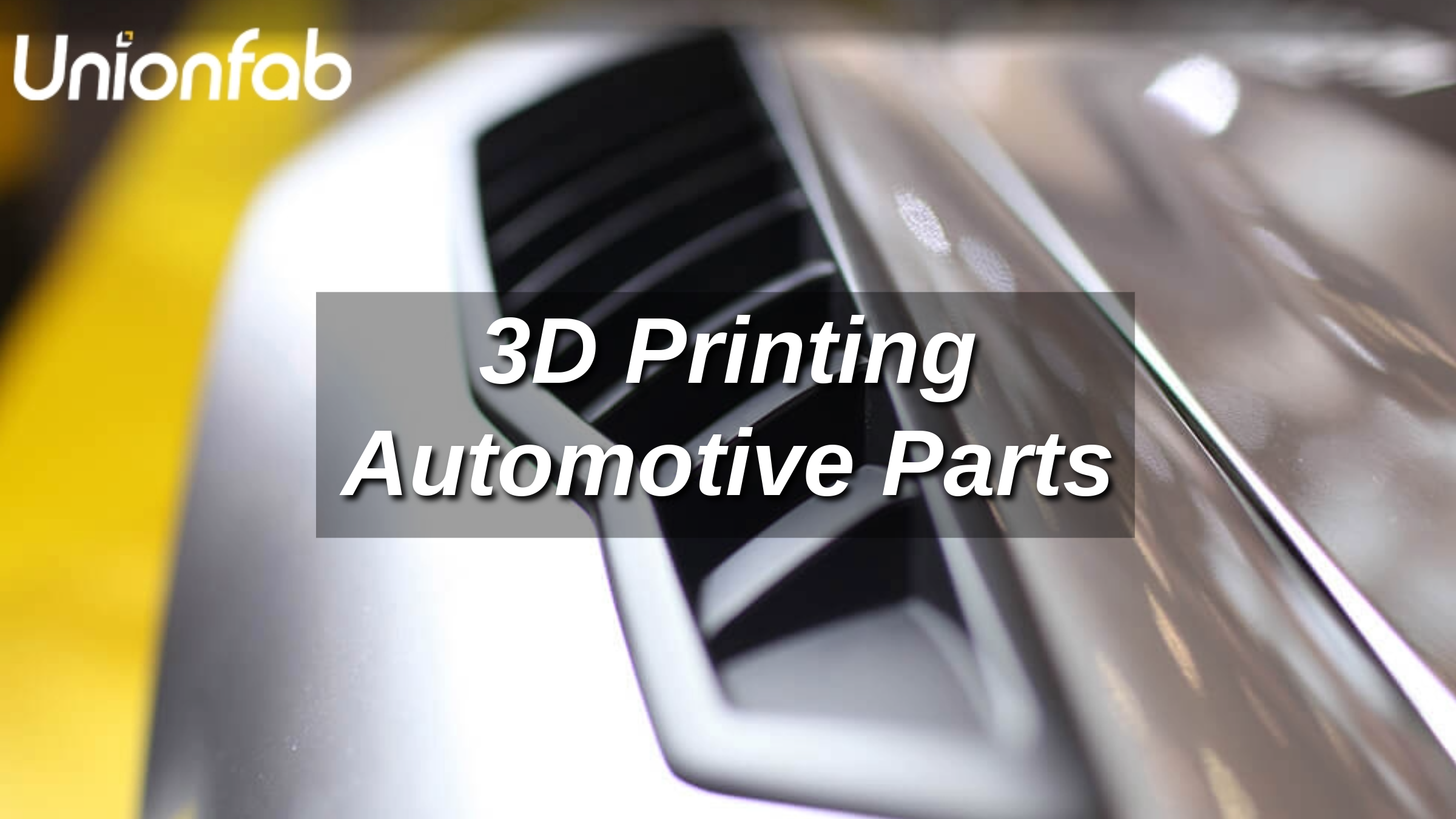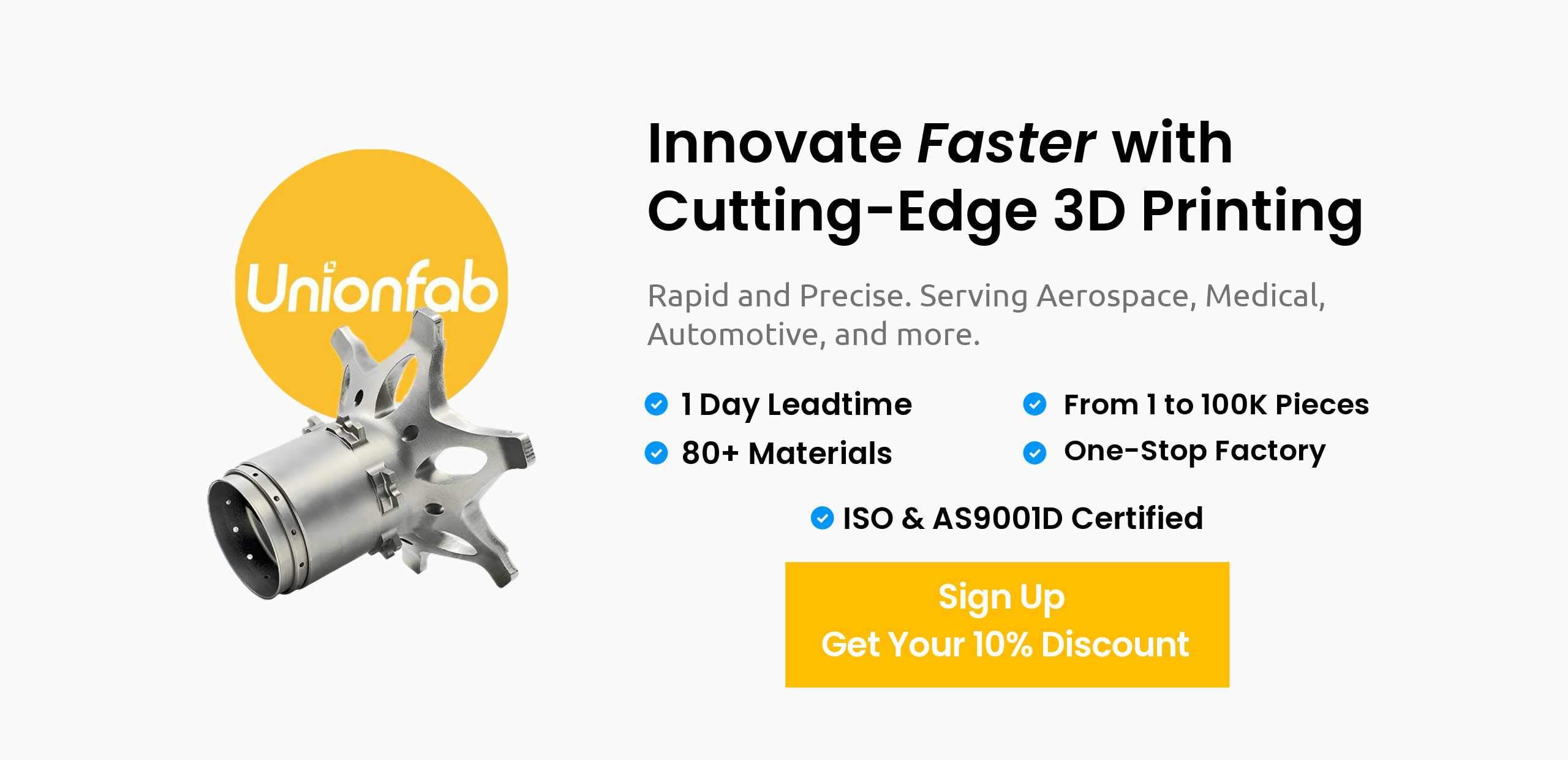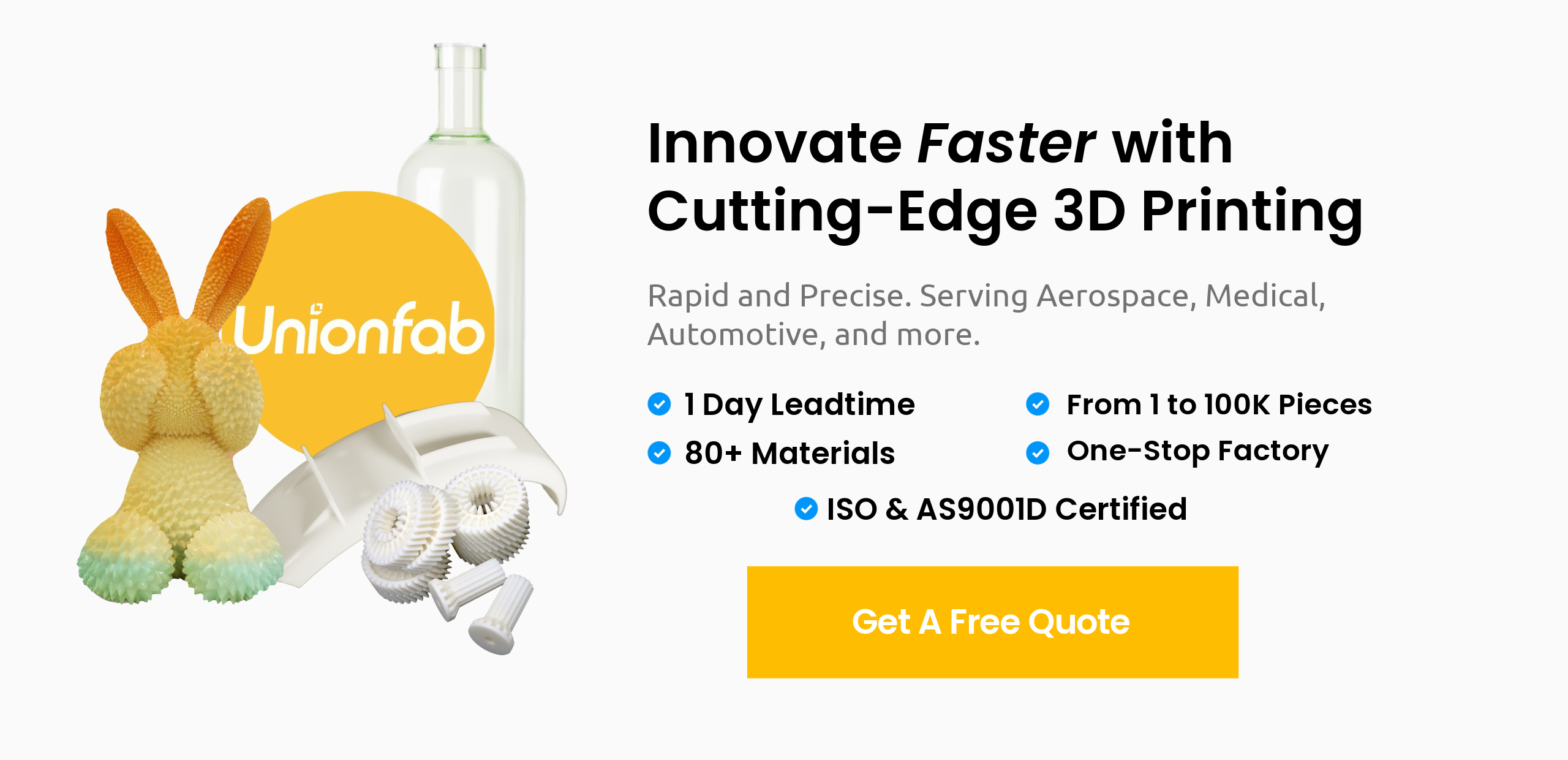3D Printing Automotive Parts: A Comprehensive Introduction

From concept cars to custom repairs, 3D printing is revolutionizing the automotive industry.
Introduction
The rise of 3D printing is reshaping automotive manufacturing, transforming it from a traditional, resource-heavy process into one that prioritizes speed, efficiency, and innovation.
Once primarily used for prototyping, 3D printing is now a critical tool for producing functional components like engine parts and interior elements. Its growing impact is reflected in the automotive 3D printing market, which is projected to grow from USD 2.9 billion in 2022 to USD 7.9 billion by 2027, at an impressive CAGR of 21.7%.
This rapid adoption is driven by 3D printing’s ability to address key industry challenges. Faster prototyping reduces development time and costs, while its capacity for creating lightweight, customized, and complex parts empowers manufacturers to meet evolving consumer demands.
Applications of 3D Printing for Auto Parts
1. Prototyping
The combination of speed, cost-effectiveness, and design fexibility makes 3D printing a game-changer in the R&D phase.
3D printing allows teams to fail fast, learn quickly, and innovate effectively. Traditionally, creating physical models for conceptual design or functional prototypes required costly tooling and weeks of waiting.
3D printing is also widely applied for assembly testing and functional testing. Assembly testing is particularly valuable when dealing with complex designs or custom features. For functional testing, Parts can be produced from engineering-grade materials that closely simulate the final product’s performance, allowing engineers to assess functionality under stress, heat, and load before committing to full-scale manufacturing.
Need high-quality prototypes quickly? By providing fast turnaround times, Unionfab supports engineers in accelerating product development cycles.

2. End-Use Metal Parts
The use of 3D printing in creating metal parts is particularly revolutionary in areas where traditional manufacturing would be slow, costly, or complex. Techniques like Selective Laser Melting (SLM) enable the creation of high-performance parts such as engine components and wheel hubs. These durable parts are lighter than traditionally manufactured counterparts, directly improving energy efficiency and overall performance.
The ability to produce parts with complex geometries, such as internal cooling channels or lattice structures, helps improve component performance by optimizing material use and reducing weight—key factors in automotive engineering.
The material efficiency that 3D printing offers is also significant. Traditional methods often lead to substantial material waste, whereas 3D printing builds parts layer by layer, using only the material necessary for the part itself. This not only cuts down on waste but also allows for the production of parts that are difficult or impossible to achieve with conventional methods. In some cases, 3D printing can result in strong and durable parts that are on par with those made through casting or CNC machining.
Discover how Unionfab’s metal 3D printing solutions can bring your designs to life with unmatched precision and durability.
3. Plastic Car Interior Parts
For plastic parts, Fused Deposition Modeling (FDM) and Selective Laser Sintering (SLS) are two popular methods. The ability to use high-performance materials like ABS and Nylon gives manufacturers a wide range of material properties to choose from, whether for strength, heat resistance, or aesthetic quality.
One of the most significant advantages of 3D printing for plastic parts is its suitability for low-volume production. When producing parts in small quantities or when introducing a new vehicle model, 3D printing helps bypass the high upfront cost of traditional injection molding.
This makes it particularly useful in the automotive industry, where small runs of parts are often needed for new designs or bespoke applications. It also enables manufacturers to create customized interior designs for individual customers, opening the door for consumer personalization.
4. Car Modification/Customization
The automotive aftermarket is another area where 3D printing is making a major impact. With 3D printing, customization is possible without the need for expensive molds.
One of the most exciting possibilities for 3D printing in customization is the ability to create highly specific parts without having to redesign entire systems.
For instance, if a car enthusiast wants to improve airflow, they can design and test a custom intake or duct system using 3D printing, reducing the trial-and-error process. This also applies to aesthetic modifications like custom badges, trim pieces, or even dashboard elements.
5. Spare Parts
3D printing is radically changing how the automotive industry deals with low-volume, high-demand parts. This shift is particularly valuable for automakers and consumers looking to extend the life of vehicles that are out of production or require hard-to-find components.
Traditional spare parts manufacturing requires inventory storage, tooling, and sometimes even the creation of specialized molds, all of which incur high costs. 3D printing removes many of these obstacles, allowing companies to produce spare parts on demand—whether for classic cars, rare models, or vehicles that are no longer in production.
BMW has been using 3D printing extensively to produce low-volume replacement parts. According to BMW Group, the company produces over 100,000 spare parts for its vehicles using this advanced manufacturing technology.
6. Jigs and Fixtures
In 2023, prototyping and tooling was the leading application segment in the automotive 3D printing market, accounting for a 48.2% share. Unlike traditional tooling, which is expensive and time-consuming to produce, 3D-printed jigs and fixtures can be revised or adjusted with minimal lead time, enhancing productivity.
By adopting 3D printing for the production of tools, jigs, and fixtures, Standard Motor Products reduced lead times by over 70% and costs by up to 90% — a benefit Unionfab offers to its clients as well.
Streamline your production process with Unionfab’s 3D-printed jigs and fixtures. Save time and reduce costs with precision tools.
Key Benefits of 3D Printing Auto Parts
Speed and Flexibility
3D printing enables accelerated development, allowing car designers and engineers to create physical prototypes of parts (or even entire vehicle models) in hours instead of days.
You can come up with a really optimized part at the end of the day. That’s all because of the speed with which we can produce the prototype parts without tooling.
— Paul Susalla, section supervisor of Rapid Manufacturing at Ford
Cost Efficiency (Low-Volume, Complex Parts)
Traditional manufacturing methods, such as injection molding or casting, often require expensive molds and tooling. With 3D printing, the upfront investment is lower since you don’t need specialized tools for each part.
By implementing in-house 3D printing for prototypes and tools, Volkswagen Autoeuropa achieved a 91% cost reduction, saving approximately €150,000 annually.
3D printing also allows for cost-effective production of low-volume parts, which can be especially useful for prototype parts, replacement parts, or specialized components in niche markets.
Scalability
3D printing isn’t just limited to prototyping. It can scale to low-volume production runs. It is an excellent choice for specialized parts, short-run models, or prototypes that transition directly into end-use parts.
For certain components, 3D printing has advanced to the point where it's viable to produce end-use parts, especially those that require customization/personalization or are made from advanced materials (e.g., metal 3D printing for turbocharger parts or exhaust systems).

Types of 3D Printing Technologies for Auto parts
Several 3D printing technologies are used for automotive parts, each with its own advantages and limitations.
Fused Deposition Modeling (FDM): The most common method, uses spooled filament that's melted and deposited layer by layer. It's affordable but materials like ABS plastic might not be strong enough for all applications.
Selective Laser Sintering (SLS): Uses a high-powered laser to fuse together powdered materials like nylon or metal. Offers better strength and heat resistance compared to FDM.
Stereolithography (SLA): Employs a laser to cure liquid resin into solid layers, resulting in smooth and highly detailed parts. Often used for prototyping due to higher cost per part.
Multi-jet Fusion (MJF): This industrial technology uses inkjet printing to deposit and fuse together layers of powdered plastic. MJF offers high production speed and good mechanical properties.
Selective Laser Melting (SLM): Uses a laser to melt and fuse metal powder together, layer by layer. This creates strong, complex metal parts for the automotive industry, like pistons, brackets, and other functional prototypes for testing.
3D Printing Technologies for Automotive Parts
Technology | Process | Advantages | Limitations | Common Applications in Automotive |
|---|---|---|---|---|
FDM | Melts and deposits spooled filament | Affordable, good for complex geometries | Lower strength, limited materials | Interior parts |
SLS | Laser fuses powdered materials | High strength, heat resistance | Expensive, limited part size | Brackets, engine components, functional prototypes |
SLA | Laser cures liquid resin | High precision, smooth finish | Limited strength, brittle materials | Concept car parts |
MJF | Inkjet printing fuses powdered plastic | High production speed, good mechanical properties | Requires specialized equipment | Functional prototypes |
SLM | Laser melts metal powder | Unmatched strength, complex geometries | High cost, surface finish limitations | High-performance engine components, functional prototypes |
Why 3D Print Automotive Parts
Rapid Prototyping and Iteration
3D printing allows for quick and iterative design exploration. Designers can create a digital model, print a prototype, test it, and make adjustments rapidly, significantly accelerating the development process.
Low-Volume Production
3D printing eliminates the need for complex tooling, making it cost-effective for producing limited-run parts, such as those for classic cars or specialty vehicles.
Design Flexibility and Customization
Traditional manufacturing requires significant adjustments to produce customized parts. 3D printing offers unmatched design freedom and allows for easy customization of parts for specific applications or even individual vehicles.
Common Materials of 3D printed Auto Parts
3D printing offers a diverse range of technologies, each with compatible materials best suited for specific applications in the automotive industry.
Fused Deposition Modeling (FDM)
ABS (Acrylonitrile Butadiene Styrene): Affordable, good strength, various colors available. Common for prototypes and low-stress interior parts (trim pieces, knobs).
Nylon 12 Carbon-filled: Offers better strength and heat resistance compared to ABS. Suitable for some functional parts with moderate stress (brackets, housings).
Polycarbonate (PC): Strong, impact-resistant, and somewhat heat-resistant. Can be used for some functional parts requiring a balance of properties.
Selective Laser Sintering (SLS)
Polyamide (PA) Powders: (e.g., Nylon PA12) Offer good strength, durability, and heat resistance compared to FDM materials. Used for functional parts (brackets, engine components) and high-quality prototypes.
Aluminum Alloys: Enable creation of lightweight yet strong metal parts for applications requiring high-stress performance (e.g., brackets).
Stereolithography (SLA)
High-Performing Resins: Resins like Somos® PerFORM and Somos® Taurus offer a compelling combination of strength, stiffness, and high-temperature resistance. These materials are lighter than metals, making them ideal for structural brackets, ducts, and heat-resistant components like headlamp housings.
Multi-Jet Fusion (MJF)
Polyamide (PA) Powders: Similar to SLS, offering good strength, heat resistance, and detail compared to FDM parts. Suitable for functional parts with moderate stress (interior components, brackets).
Selective Laser Melting (SLM)
Stainless Steel: A common choice for its overall strength, corrosion resistance, and suitability for various automotive applications (engine components, high-stress brackets).
Aluminum Alloys: Offer a lightweight alternative to stainless steel, useful for applications requiring strength and weight reduction (brackets, some engine components).
Titanium Alloys: High-strength, lightweight option used for high-performance parts requiring exceptional durability (e.g., racing components).
Conclusion
3D printing is rapidly transforming the automotive industry, offering a faster, more flexible, and potentially more sustainable approach to car parts.
From rapid prototyping and low-volume production to custom parts and even functional components, 3D printing's applications are diverse and constantly evolving.
Craft Your Dream Ride with Unionfab's 3D Printing
Transform your car into a one-of-a-kind masterpiece. Unionfab's cutting-edge 3D printing technology and unparalleled expertise unlock a world of customization possibilities.
We'll partner with you to bring your vision to life, from concept to creation. Make your car truly yours and elevate your automotive journey – contact Unionfab today!


